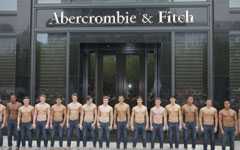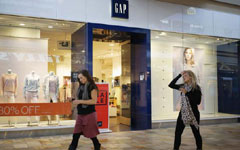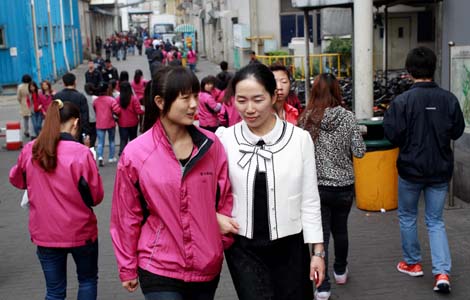Merchants close stores in US but expand in China
By Derek Chen (China Daily) Updated: 2014-04-22 07:23When the sun is about to set in New York, it rises here in Shanghai. Abercrombie & Fitch, founded in the Big Apple, opened its first Chinese flagship store in Shanghai on April 19. That's as the fashion company shut 62 US stores in its fiscal year 2013, according to a statement in February. It's scheduled to close an additional 180 stores there by 2015, Business Insider reported.
Gap Ltd opened a 2,000-square-meter Old Navy store in Shanghai in March, its first in China. The company entered the Chinese market in October 2010 and now has 77 own-name stores and 12 outlets in the country, according to its corporate website.
|
 |
 |
The trend set by Abercrombie and Gap will most likely continue.
RadioShack Corp, a household name in the US, plans to close as many as 1,100 stores, almost one-in-five of the total, the consumer electronics retailer said last month. Still, it opened its first store in Shanghai in March. Although it is its only store in China so far, the company plans to open at least 15 in major Asian markets over the next year, CEO Joseph Magnacca has said.
Why are these retailers struggling in their home market? Domestic retail demand is barely growing in the US. For any operator to expand there, it almost has to be at the sacrifice of someone else. In China, however, the industry's growing. The entire pie has expanded at a double-digit annual rate for the past several years. China's total social retail consumption for the first two months of 2014 increased 11.8 per cent year-on-year, according to latest National Bureau of Statistics data. Retailers can grow without eating into others' market shares.
China, with the world's biggest population and second-largest economy, has become a spotlight for many US retailers.
For example, Apple Inc's total China sales - including Hong Kong and Taiwan - exceeded $8.8 billion in the fourth quarter, according to the company's latest earnings report. That's a 29 percent annual increase. Sales in its home market dipped 1 percent. Apple's first-quarter sales are expected to be released on April 24.
- Shandong Airlines to buy 50 Boeing planes
- "Green business" to tackle China's pollution problems
- Logistics expo to revive ancient Silk Road trade
- China struggling to meet emission targets
- Car stereo maker eyes bigger China share
- China insurers' assets near 9t yuan
- Chinese rare earth miner's profits nosedive
- Sany digs deep to lay foundation in Africa

















